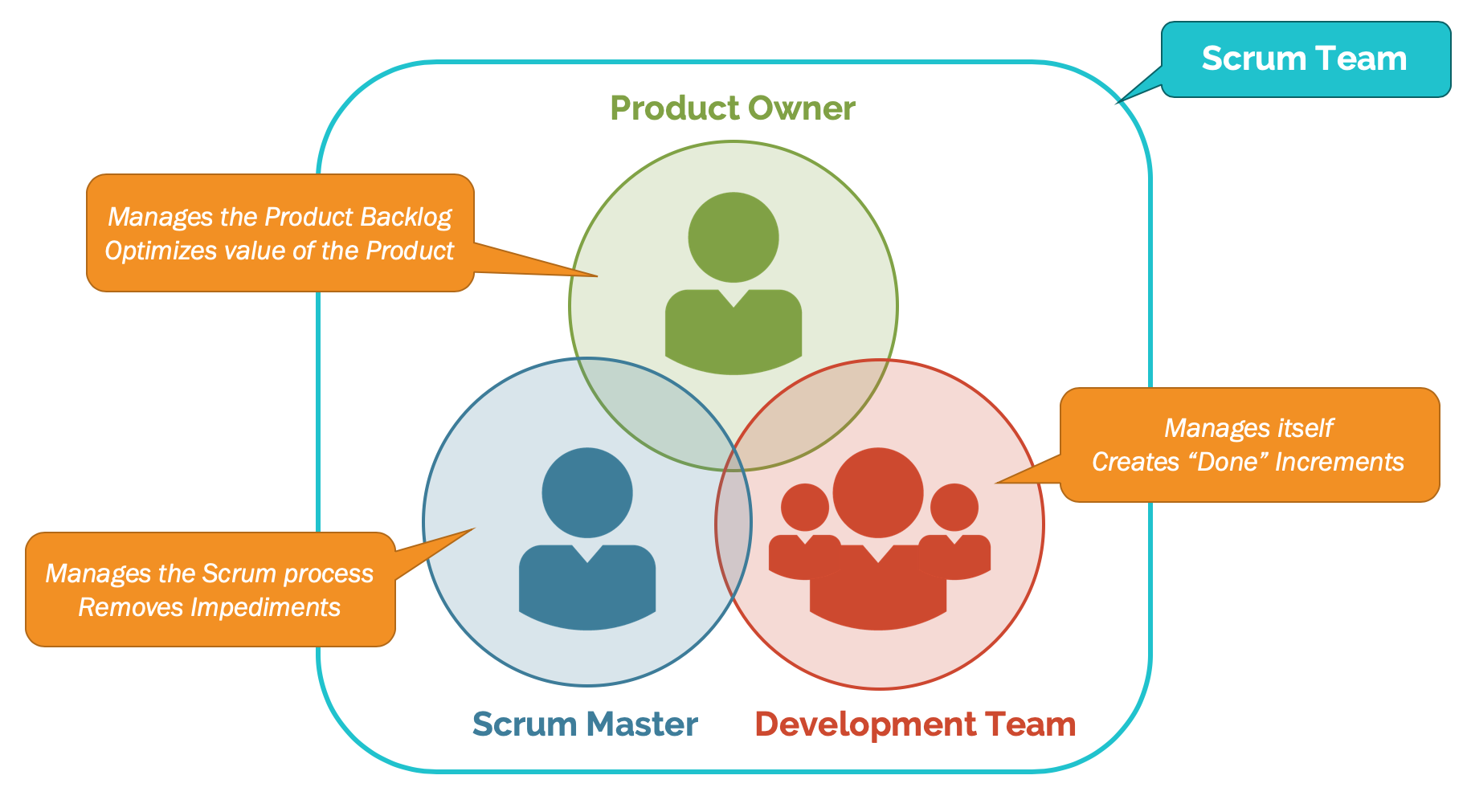The Scrum Team consists of 3 distinct Scrum roles that promote self-organization: the Scrum Master, the Product Owner, and the Development Team. The accountability of each role complements the accountability of the other roles. Hence, collaboration between these roles is the key to success:

- The Scrum Master, through servant-leadership, coaches, facilitates, educates, and guides the team to solve its own problems by using the three pillars of empiricism. The Scrum Master understands that constructive disagreements are necessary to build high-performing teams. The Scrum Master allows the team to learn from the cycle of failing, trying, and failing again. The Scrum Master also helps self-organization by proactively and uncompromisingly removing impediments that are beyond the team’s self-organization capability.
- The Product Owner closely interacts with stakeholders and product management to identify the most valuable work. The Product Owner relies on the Development Team for the actual delivery of a potentially shippable software increment in every Sprint. At every Sprint Review, the stakeholders help the team in shaping the future product.
- The Development Team members collaboratively select their own work from the Product Backlog ordered by the Product Owner. They collaboratively create actionable activities to realize their forecast as reflected in the Sprint Backlog. They re-plan their work on a daily basis within the time-boxed Sprint to optimize the team’s output. They deliver a potentially releasable increment (integrated with increments of other teams, if multiple teams are involved) of software at the end of each Sprint. This self-directedness, the ability for people to direct their own work, motivates them and reinforces self-organization.
One of the best examples of self-organization comes straight from Ken Schwaber’s blog post “Self-Organization and Our Belief That We Are in Charge.”
I pose the following question to Scrum Masters: What is the best way to organize 100 developers into Scrum Teams?
According to Ken, he would
Let the developers self-organize themselves into Development Teams as per the recommendation in The Scrum Guide that has all the cross-functional skills to build an integrated done Increment every Sprint. The Scrum Master may remind them that all one hundred people must be engaged meaningfully and that mentoring is expected. The Scrum Master may have the lead developers lead a discussion about the software and architecture to be worked on, with the underlying dependencies. The Scrum Master may have the Product Owner discuss the intricacies of the Product Backlog. And, if they organize sub-optimally, they can correct and continually adjust team membership as they find out more. Promote a learning organization with bottom-up intelligence. So the one-hundred-people group self-organizes and divides itself into teams.
This is one of the topics from my book – “Scrum Insights For Practitioners: The Scrum Guide Companion“. Happy reading!
I look forward to hearing your thoughts on how the Scrum roles can further promote Self-organization.
